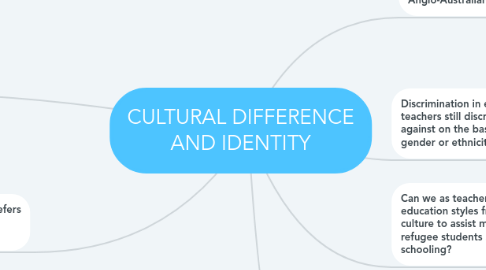
1. 'Culture' is one of the most complex words in the English language.
1.1. 'Cult' - the collective
1.2. Derived from Latin 'cultura', meaning 'to cultivate'
1.3. Can also mean: to foster, to inhibit, to maintain.
2. 'Multiculturalism' usually refers to ethnic, gender, or social culture.
2.1. There are still many different types of cultures. For example, educational culture.
2.1.1. Educational culture is formed by the dominant ethnic, gender, and social groups.
2.1.1.1. Languages that are taught in schools are chosen based on immigration and the Government's diplomatic relations with a country.
2.1.1.1.1. Chinese has been promoted by government due to increased migration and diplomatic ties. Italian was, and still remains, popular due to mass migration post WWII. Other languages, such as French, are taught because they are spoken in multiple countries.
3. 'Assimilation' - the process of making migrants dress, speak and conform to Anglo-Australian culture.
3.1. Took place in schools throughout 20th century and arguably still today.
3.1.1. Schools have been created to cater solely for a cultural group
3.1.1.1. Religious schools - Islamic and Jewish. Islamic schools follow 'Madrassah' instead of Government curriculum. Allows for teaching of religious studies, Arab language classes, and general subjects to be taught to accommodate Islamic religion and traditions.
3.1.1.1.1. Due to the high fees, only 10 per cent of Australia's Muslim population attends these schools.
4. 'Multicultural education' - "fosters diversity" and incorporates perspectives from different cultures.
4.1. In the Australian and Victorian Curriculums, we have the cross-curricular priority 'Australia's engagement with Asia', which focuses on cultural relations.
4.1.1. English and Humanities allows for more culturally diverse studies. E.g. Reading texts written by refugees and non-English language authors, studying Chinese, Egyptian, and African histories.
